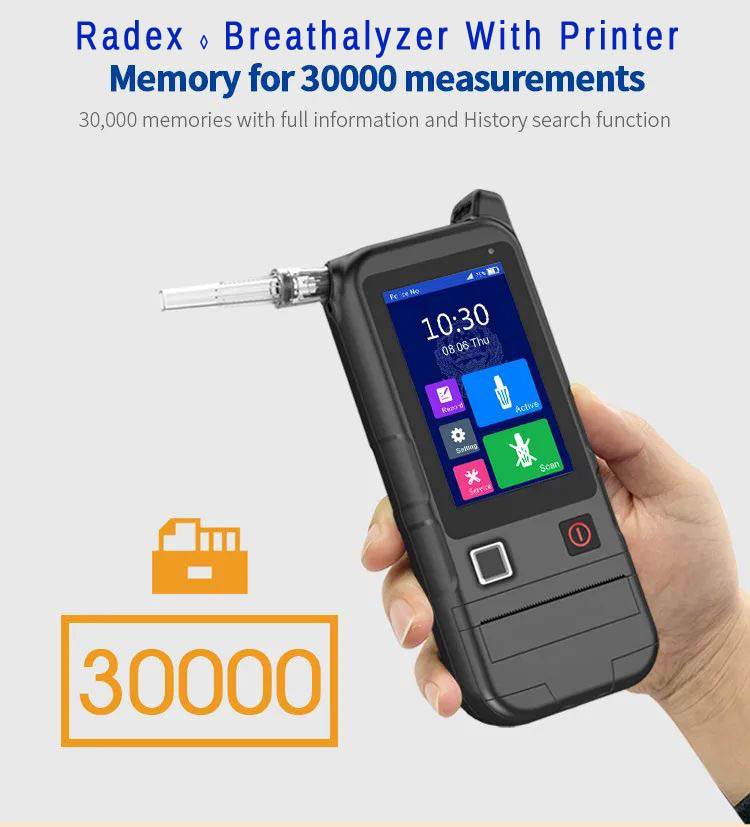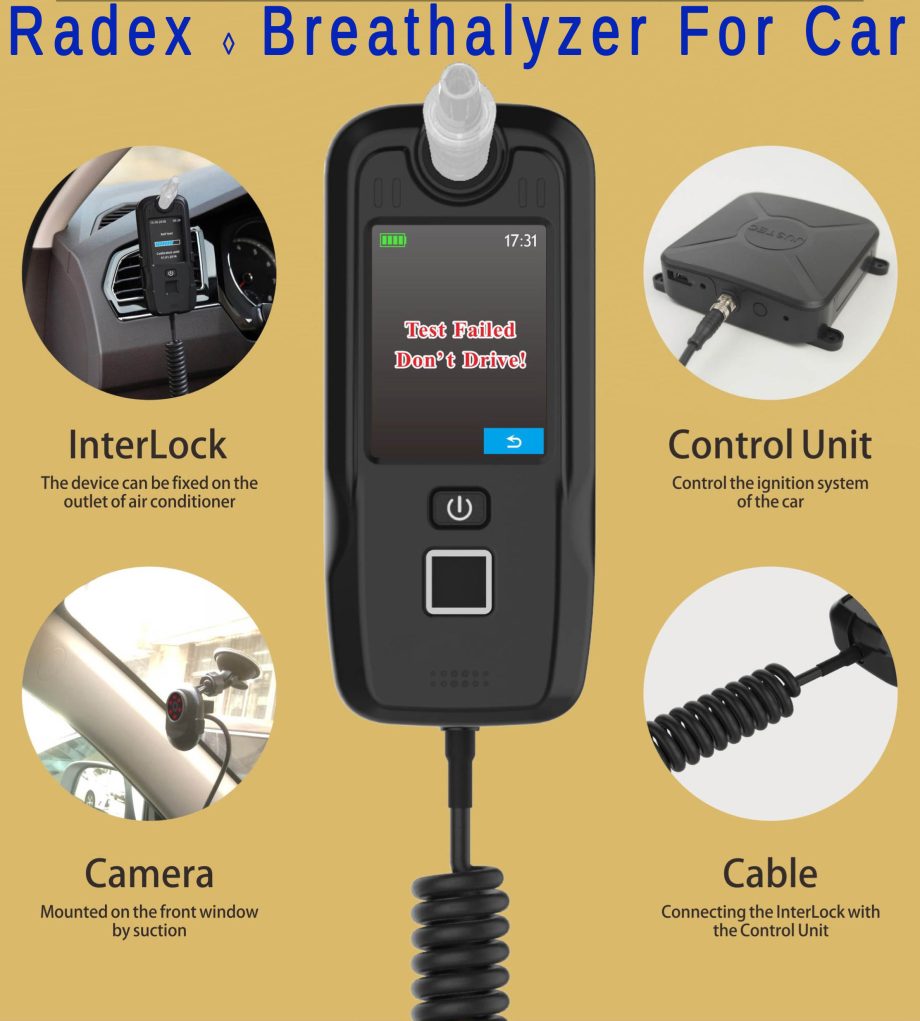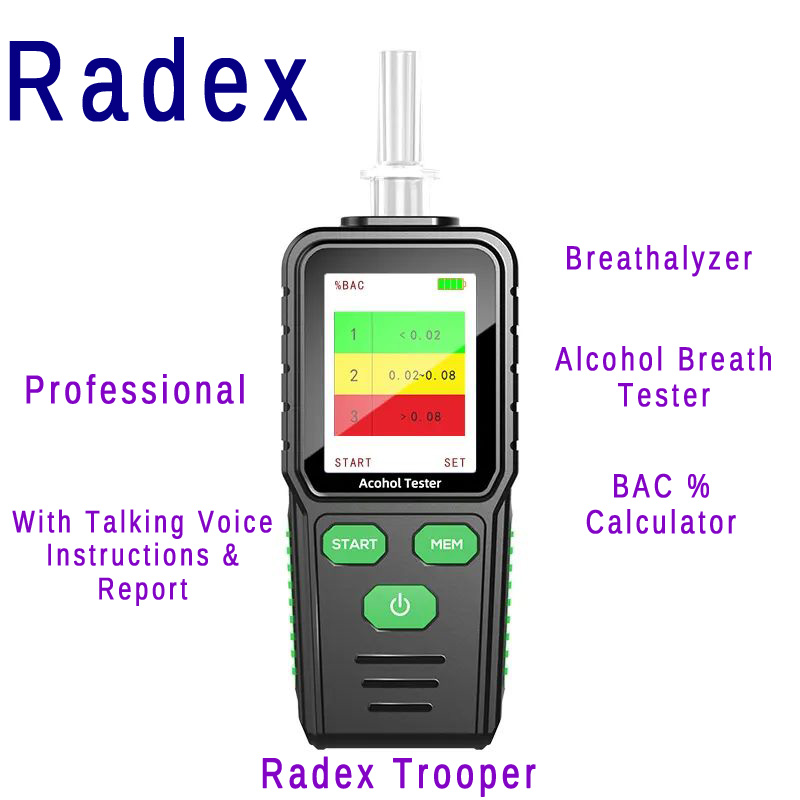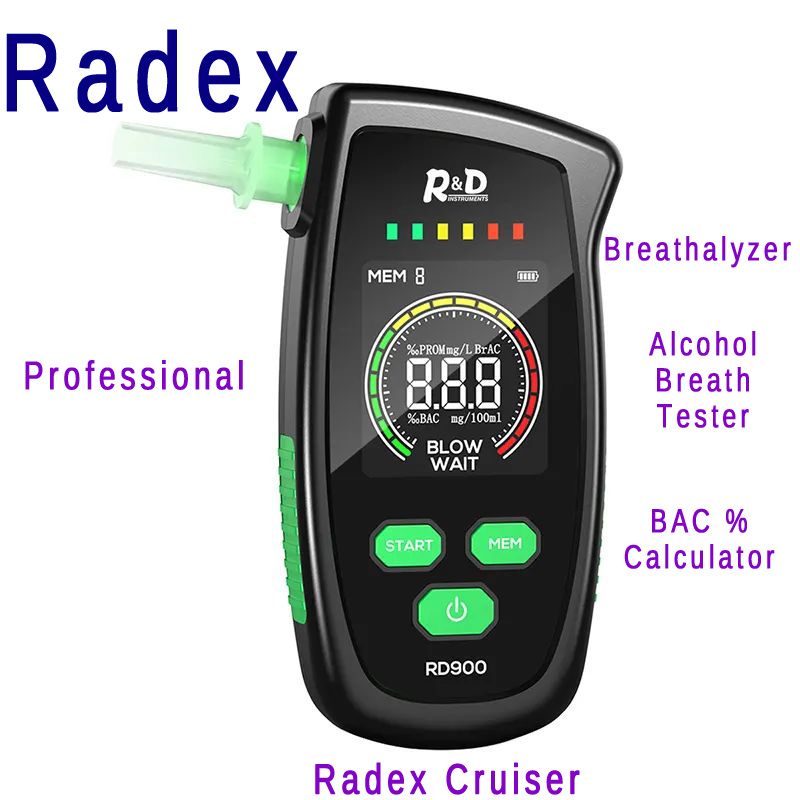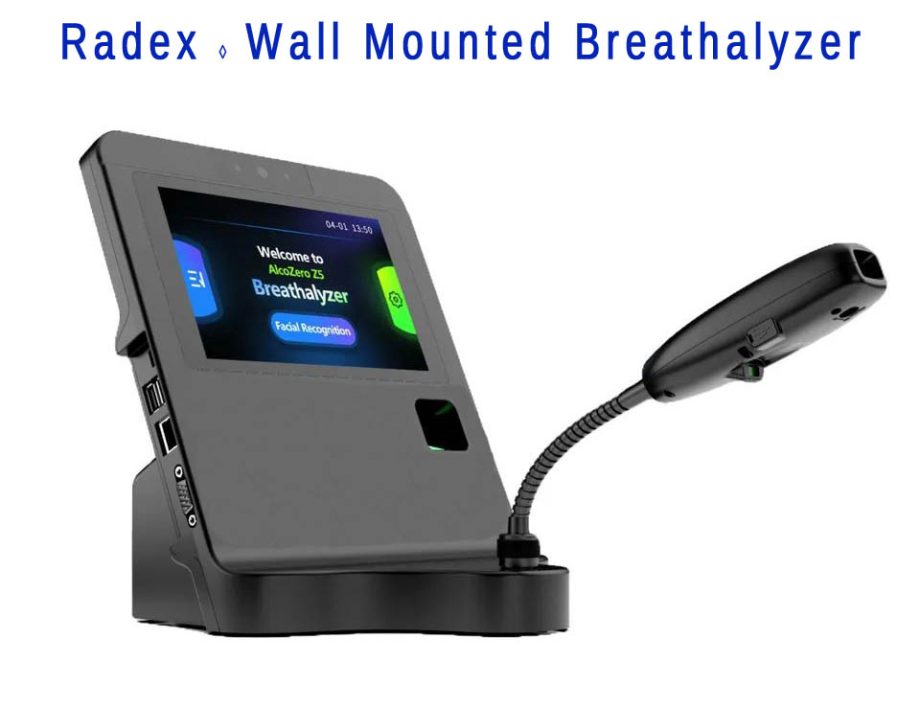-
Alcohol Breath Analyser With Printer
$499.95 -
Baiid Interlock Device
$899.95 -
Radex Alcohol Breath Tester
$89.95 -
Radex Breathalyzer
$69.95
What Is A Breathalyzer In A Car?
Car breathalyzers, commonly referred to as ignition interlock devices (IID), are discreet electronic devices designed to keep drivers from starting their vehicles until they pass a breath test. Some IIDs also feature random rolling retests during driving; such devices require constant testing throughout your drive for optimal functioning. These tests may seem intimidating, but technology has made the experience less scary. Read on to gain more knowledge on how IIDs operate and what you should expect from an IID provider.
What is a Breathalyzer In A Car?
Breathalyzers in cars are devices that attach to your starter motor and require you to provide breath samples in order for it to start your engine. Ignition interlock devices (also referred to as breathalyzers or ignition interlock systems (IID)) may be ordered by courts following DUI convictions in order to deter people from driving under the influence; studies have revealed that using such systems decreases repeat DUI offenses by approximately 40% as opposed to drivers without these devices installed in their vehicles.
To use an IID, blow into its connected mouthpiece and allow it to measure your blood alcohol content (BAC). If this reading exceeds what is prescribed by your court, then your car won’t start. Furthermore, some IIDs require periodic retests while driving so as to make sure you remain free from alcohol impairment. If your breath sample fails, most devices provide three minutes for you to provide another sample before permitting you to restart the car safely and drive away again.
Once your test is over, the device will record its results for later review and may even include video cameras to record your test, making this evidence-based device especially valuable if ever needed to show that you were not driving while impaired. Some may attempt to bypass these devices by having sober friends breathe into the mouthpiece, but these attempts usually prove futile. If caught, additional fines, license revocation or IID periods could follow; additionally tampering alerts would likely be activated upon detection; therefore it is wiser to leave your device alone when not being used and allow our ALCOLOCK technicians to train anyone who will regularly be using your device on how it should operate properly.
Ignition Interlock Devices
Ignition interlock devices have proven themselves invaluable tools in combatting alcohol-impaired driving and protecting others on the road from injury and death. Their effectiveness has become so widespread that many states now mandate them as part of DUI conviction proceedings. However, voluntary installation is also possible and many insurance companies encourage this by offering discounts for drivers who decide to install one voluntarily.
These devices utilize advanced fuel cell technology to test breath samples, with each sensor consisting of two platinum electrodes surrounded by porous acid-electrolyte materials that react with alcohol to form protons and electrons that prevent it from starting a vehicle. Furthermore, there are anti-tampering features designed to prevent users from providing false samples through mouthwash or other methods, as well as log any failed tests or attempts at tampering, reporting them either directly to an administrator or during monthly calibrations.
Voluntary ignition interlocks offer more than safety; they also help offenders maintain legal driving status and minimize financial hardships associated with DUI convictions. Cars are essential tools that people rely on for work, picking up children from school, substance abuse counseling sessions or basic family needs such as groceries. Studies show that families who opt for voluntary ignition interlocks find them beneficial; many report positive changes in driver behavior following installation.
Not every driver is suitable for an ignition interlock. There may be medical reasons that prevent someone from being able to properly blow into the device, including COPD and tuberculosis. Furthermore, people with severe diabetes should consult their healthcare professional prior to installing and using an ignition interlock.
Rolling Retests
As an extra precaution, most ignition interlock devices come equipped with “rolling retests.” These random tests must be taken while driving and serve to deter those from bypassing the system by having someone else blow into their IID and start their vehicle while over the legal alcohol limit – an attempt at bypassing legal limits while remaining legal.
After being activated by the device, rolling retests will be requested every few minutes for several minutes until a driver provides a breath sample that fulfills state guidelines for alcohol levels in their system. They must stop their car, turn off its engine, and pull over into a safe parking spot away from traffic in order to provide this sample.
As this can be quite annoying if the individual is caught in traffic or an intersection, but is a necessary safety feature, this IID will issue warnings if any user uses their IID as a way around DUI probation by missing one of the retests; these alerts may include initiating car horn or flashing lights as part of state regulations in order to remind them that they have not provided valid breath samples for testing.
No, a missed retest won’t force your vehicle off the road; but it does record that someone was impaired when they failed the test and will be reported to either court or DMV as a violation. Furthermore, an IID doesn’t allow users to disconnect it due to missed tests, as doing so would cause damage either to device or vehicle.
People concerned about being uncomfortable performing a breathalyzer test while driving will be happy to know there are now cars with integrated breathalyzers available on the market. These vehicles make it easy for drivers to blow into their breathalyzer, which then tells them if they need to stop and retest or not. Furthermore, these breathalyzers can easily be installed into virtually all types of vehicles and they’re becoming more popular as more people learn their benefits.
Getting Started
Breathalyzers in your vehicle can help decrease drunk driving accidents by acting as deterrents for drivers over the legal BAC limit and requiring them to provide a breath sample prior to starting up their car. In addition, breathalyzers provide useful tools for those recovering from substance abuse issues as a quantifiable way to measure progress and stay sober.
York University student has developed an ignition interlock device (IID). This breathalyzer uses NXP Semiconductor’s LPC802 microcontroller to measure alcohol content in drivers’ breath, and prevents their vehicle from starting if their BAC exceeds legal limits. Furthermore, periodic retests during driving ensure continued sobriety.
Some states have already implemented IID requirements for drivers convicted of DUI offenses, with Mothers Against Drunk Driving and other organizations championing this new technology due to its potential to save lives and create safer roads.
Before using an ignition interlock device, there are a few key points you must keep in mind before getting started. First and foremost, make sure the company you work with to install your ignition interlock is reliable; check its reputation with your state government, warranty policies and maintenance plans offered by this provider as well as pricing.
Once your device is in place, you must abide by all state requirements regarding its usage. Before starting the car, a breathalyzer will test for alcohol levels; if results exceed their tolerance thresholds, the device may prompt you to find a safe location where to stop and turn off engine before prompting to pull over and disable vehicle. It will not disable engine completely!
If you fail the test three times in a row, you will be instructed to pull over and stop for a rolling retest. During this procedure, a device will measure your breath again before permitting you to start driving again. Furthermore, your device must be calibrated regularly – you will be reminded both via text/call reminder as well as notice on its device about when calibration should take place.
Top 7 Reasons to Have a Breathalyzer in a Car
Car breathalyzers or ignition interlock devices (IID) are commonly employed alongside state DUI laws to deter drunk driving and avoid accidents, injuries and fatalities it causes. Unfortunately, according to an investigation conducted by The New York Times this device caused drivers to become distracted, leading to accidents.
1. It Can Help Prevent Accidents
Few are aware that breathalyzers don’t only come into use after being charged with DUI; voluntary installation can help make our roads safer for everyone.
Ignition interlock devices can help protect drivers from distracted driving by requiring drivers to perform rolling retests while on the road, according to a New York Times report. Unfortunately, however, these devices may cause accidents when misused.
As soon as using a breathalyzer device, one of the key principles to remember is not consuming products containing ingredients ending in “ol” or “yl”, as these may register as alcohol and give false positive test results on the device.
2. It Can Help You Get Sober
Court orders often mandate ignition interlock devices be installed in vehicles of DUI offenders as part of their punishment. Similar to breathalyzers, ignition interlock devices include additional features that help drivers remain sober during driving.
Ignition interlocks operate by measuring the concentration of alcohol in alveoli – small sacs found throughout your lungs that store gas – using infrared light through your breath sample and measuring how much makes its way through.
Some types of mouthwash, gum, and breath mints may cause false positives on a breathalyzer device – which can be both embarrassing and frustrating. To avoid this scenario, follow a strict sober driving schedule, always blowing into the breathalyzer prior to starting up your car.
3. It Can Help You Get a Job
Car breathalyzers or ignition interlock devices are discreet electronic devices installed into vehicles that prevent drivers from starting their engines until they pass a Breath Alcohol Content (BrAC) test. Retests may also be administered periodically during driving to ensure continued sobriety.
The device resembles a walkie-talkie in size and contains a disposable tube for drivers to blow into for analysis. Results take just seconds to read out; beeps or messages appear if further testing needs to be conducted – in which case drivers must find an acceptable place and stop before providing another sample sample.
4. It Can Help You Get Your License Back
DUI suspects might be required to install an ignition interlock device in their vehicles, which includes an alcohol breathalyzer connected to its ignition system that only allows starting their car if their breath does not contain any traces of alcohol.
Ignition interlock devices have become more widely utilized as court-mandated penalties for DUI offenses in many states. Although they offer several advantages, they can also present considerable barriers for drivers attempting to use them every day and cause distraction.
Most people believe it’s impossible to beat a breathalyzer test, but there is one simple secret you can use to pass any breath test.
5. It Can Help You Save Money
Car breathalyzers, more commonly referred to as ignition interlock devices (IID), measure your blood alcohol concentration. They’re often mandatory after being charged with DUI and prevent your vehicle from starting up if alcohol is detected on its breath.
Saving money through safe driving practices can save money in several ways: it prevents drinking before driving and means spending less at grocery stores and bars/restaurants; you will also save on gasoline and taxi fare; this savings adds up quickly over time!
6. It Can Help You Save Your Life
Drivers convicted of drunk driving must install breathalyzers or ignition interlock devices in their cars in many states, which require them to blow into it before starting up their car.
Upon detection of alcohol consumption, the device will alert the driver with a beep and flashing headlights, forcing them to find an acceptable area in which to stop and sober up before restarting their car. Breath test machines measure the concentration of ethanol molecules in someone’s breath by shining infrared light through their sample and measuring how much light has been absorbed by their sample.
7. It Can Help You Save Other People’s Lives
Many are aware that breathalyzers can help determine someone’s blood alcohol content; but not as many know they can also save lives by helping to avoid drunk driving accidents.
An ignition interlock device requires drivers to blow into it before starting their vehicle; such devices are frequently employed by those convicted of DUIs and those pulled over for suspicion.
Recent research indicates that alcohol-related crash deaths can be significantly reduced with such devices in vehicles, leading researchers to estimate that by equipping all new cars with such devices each year, hundreds or even thousands of lives would be saved each year by installing a breathalyzer in a car.
